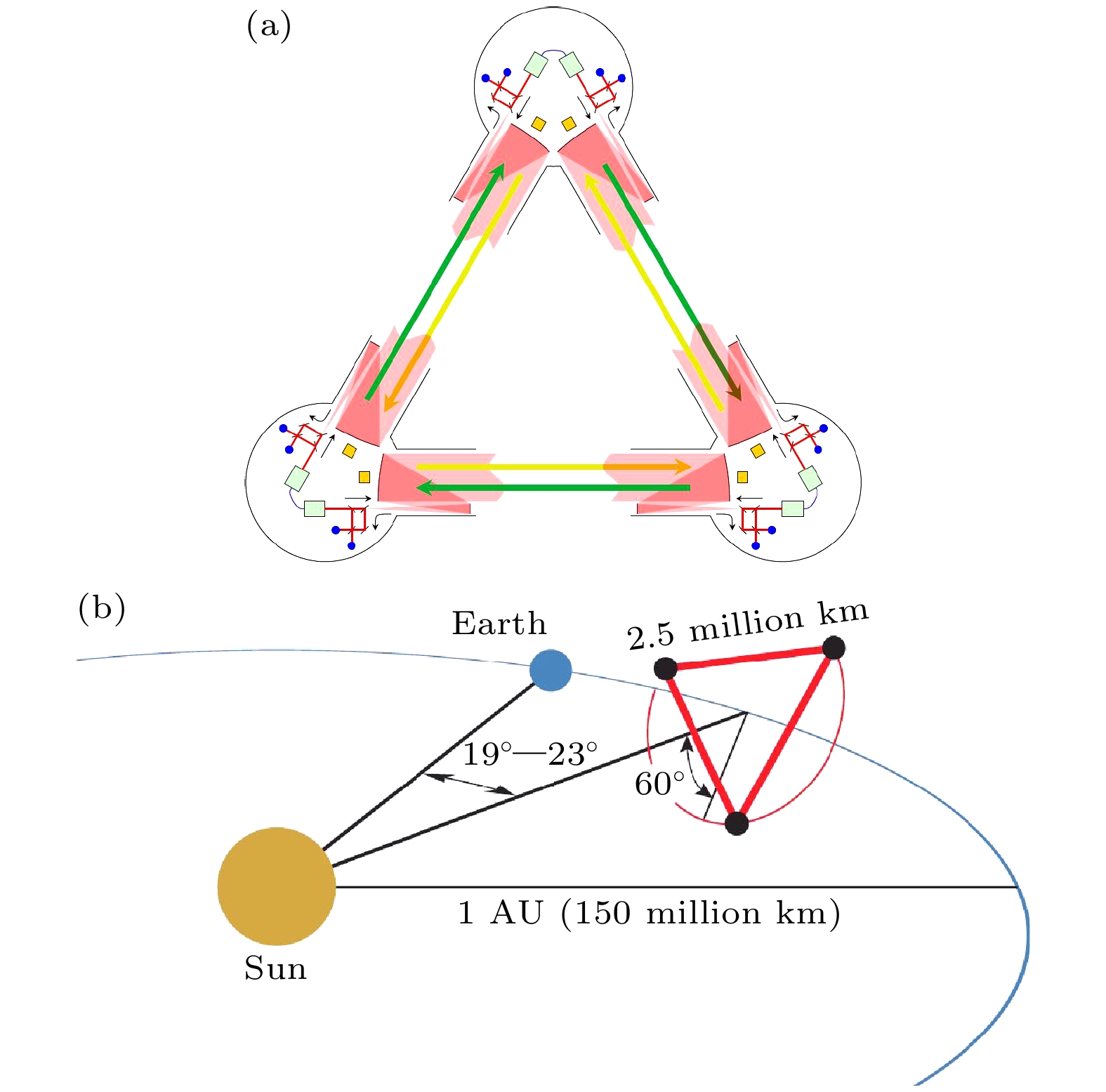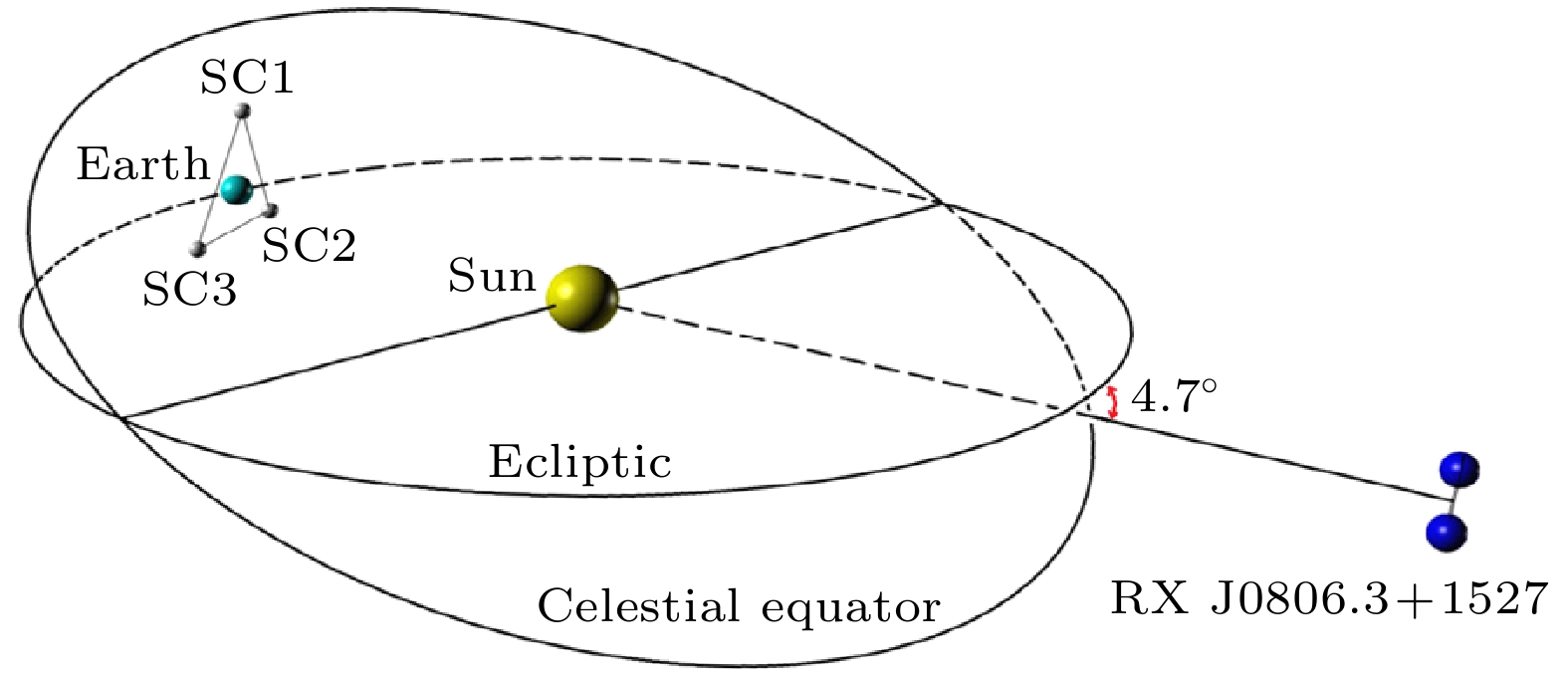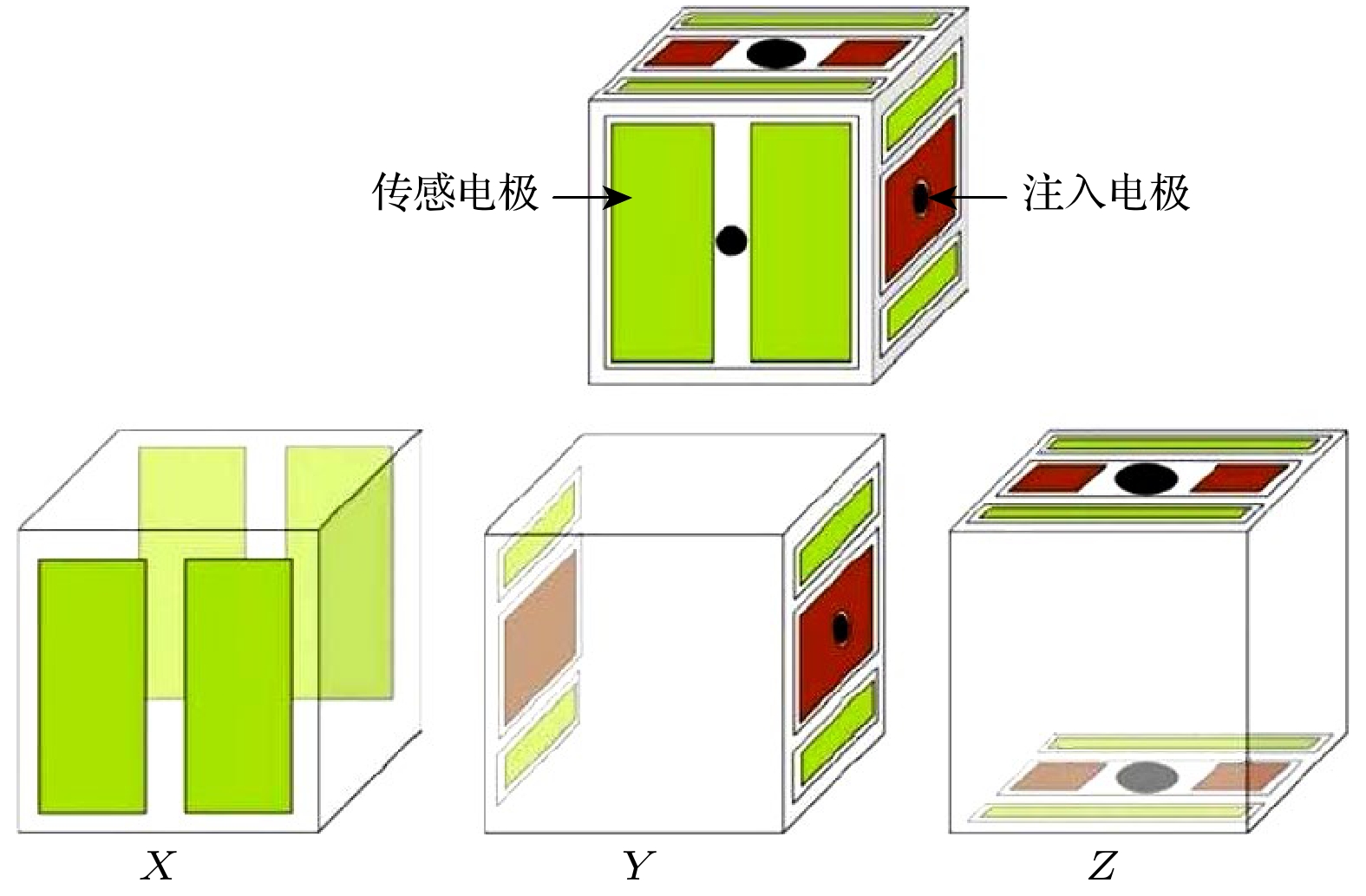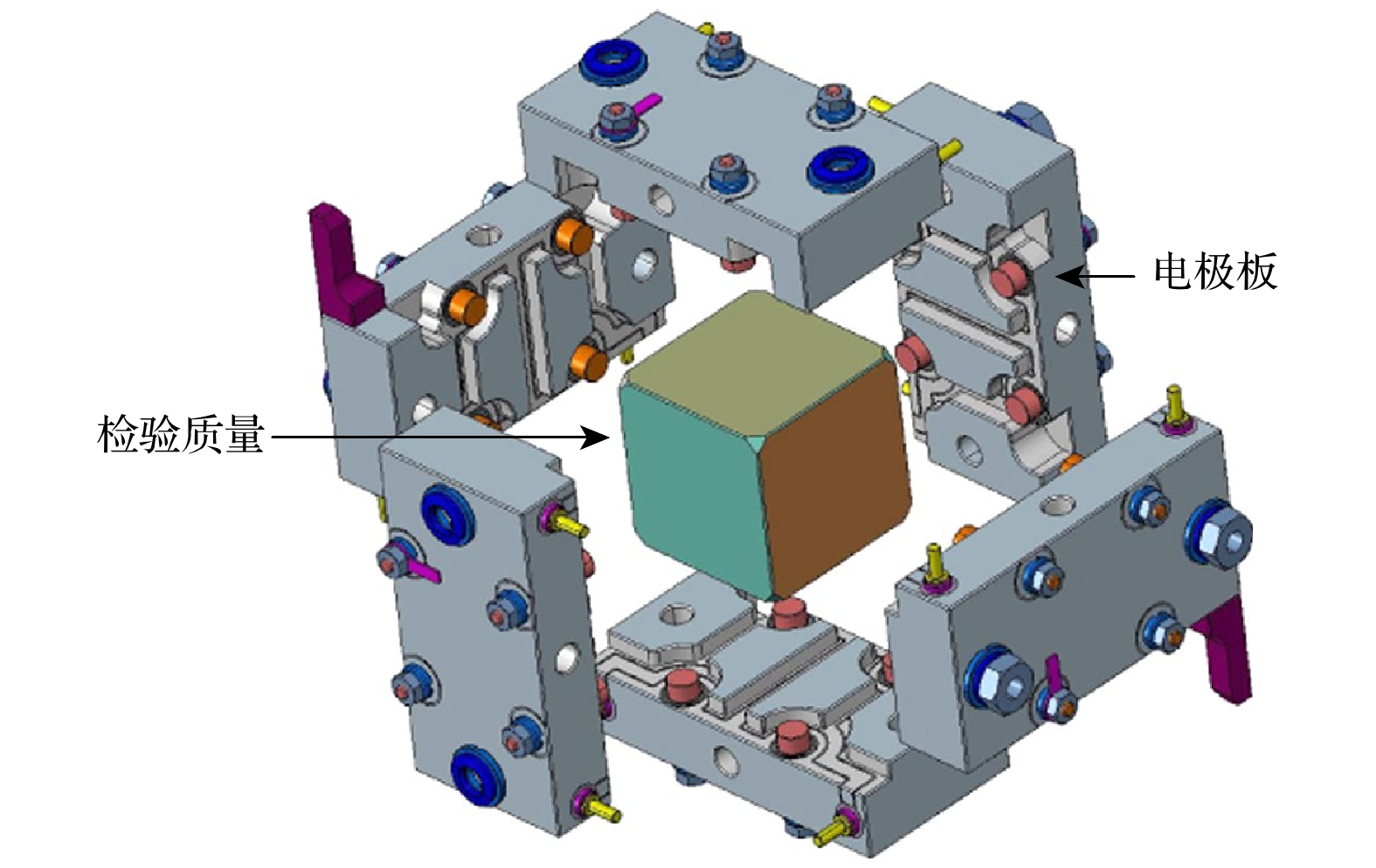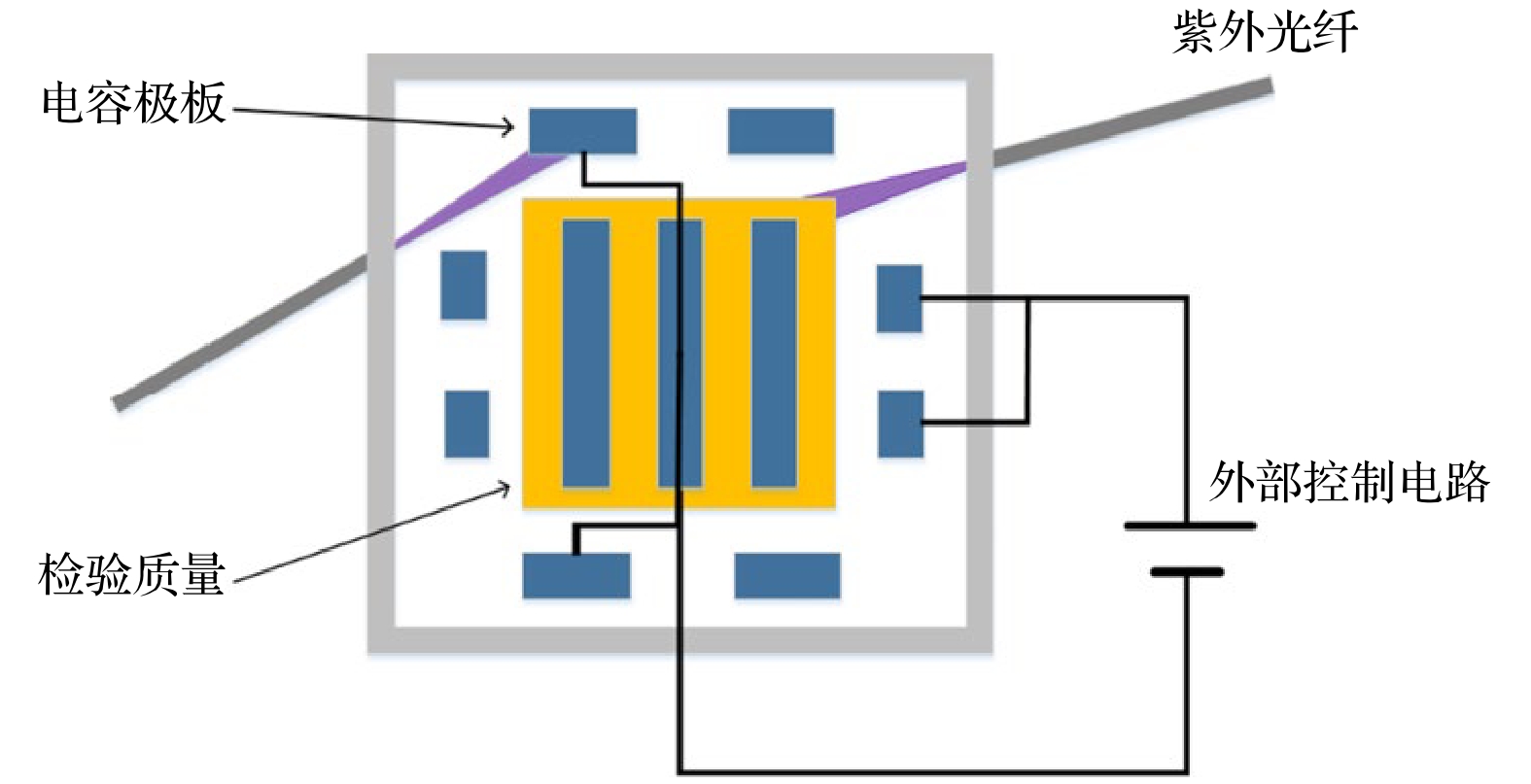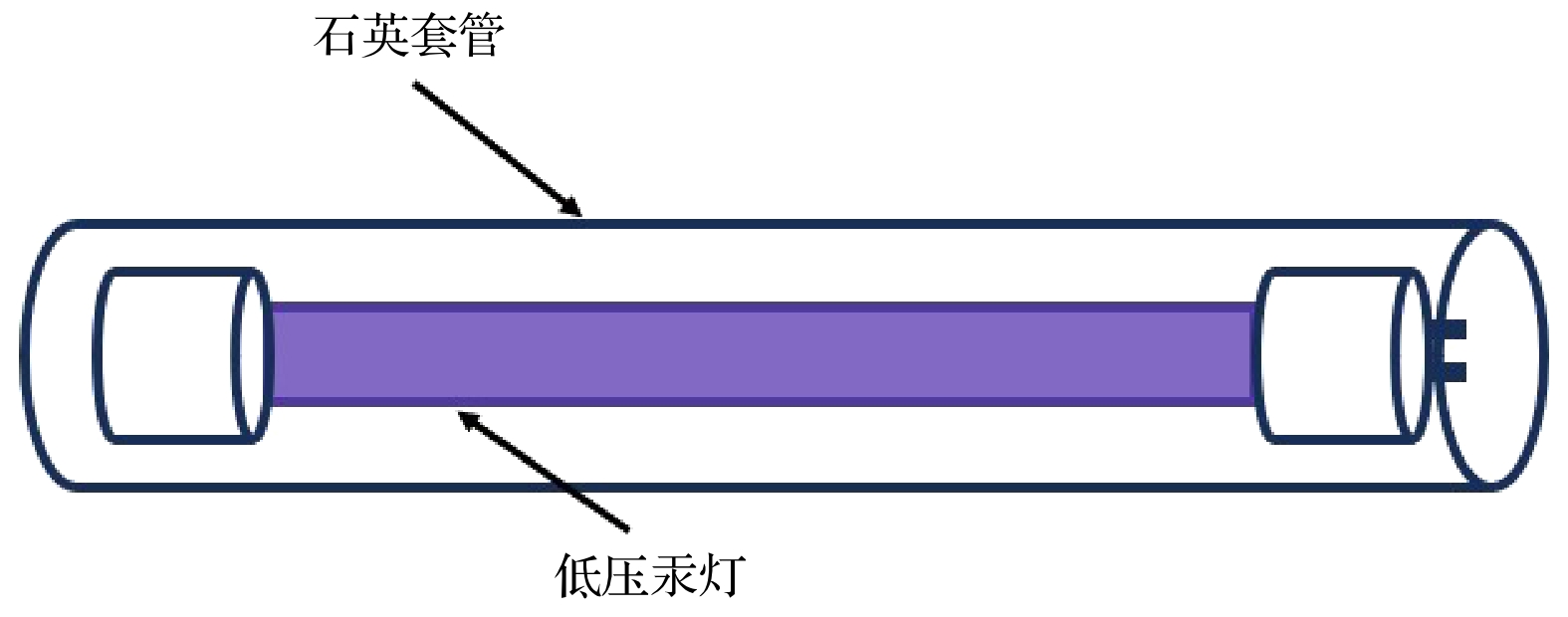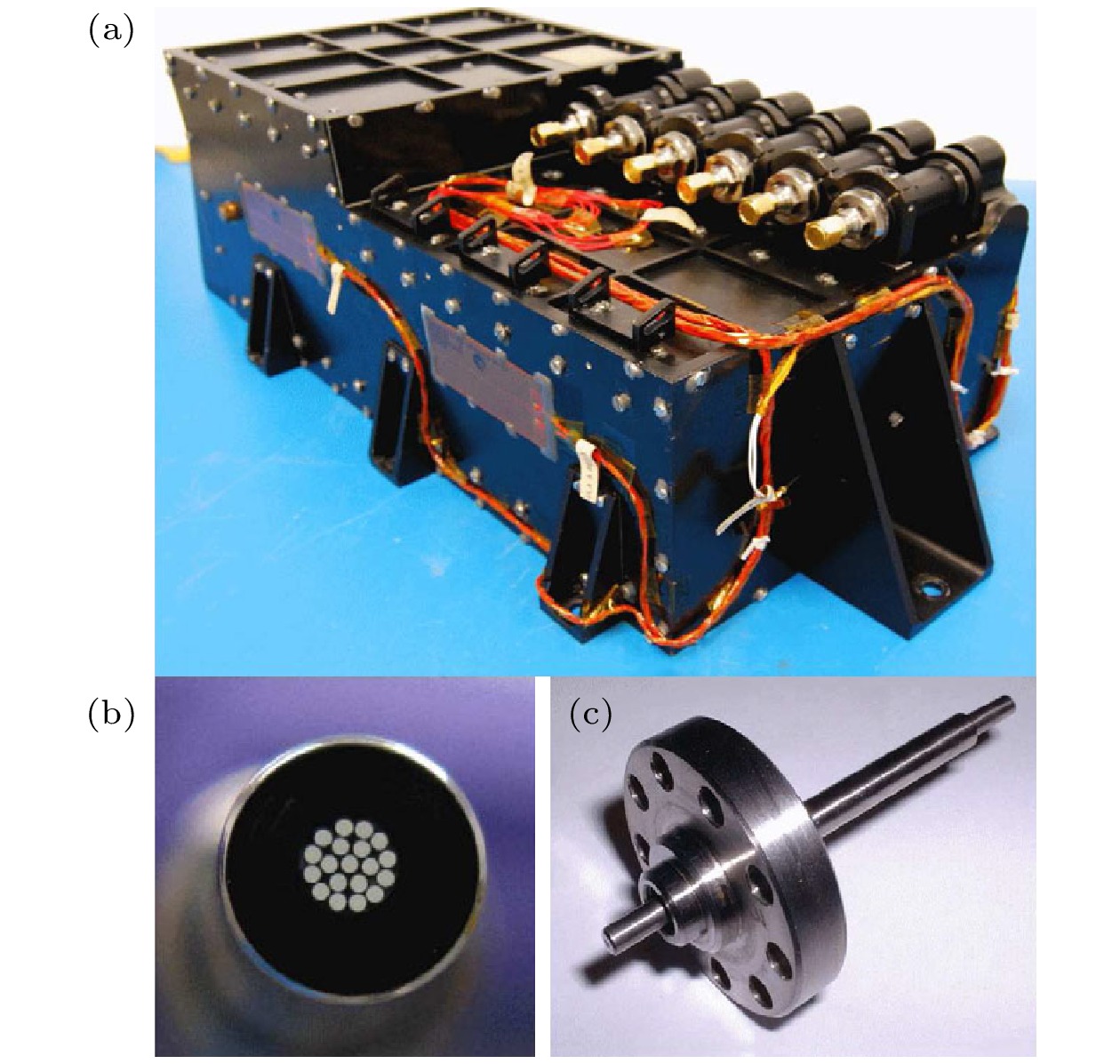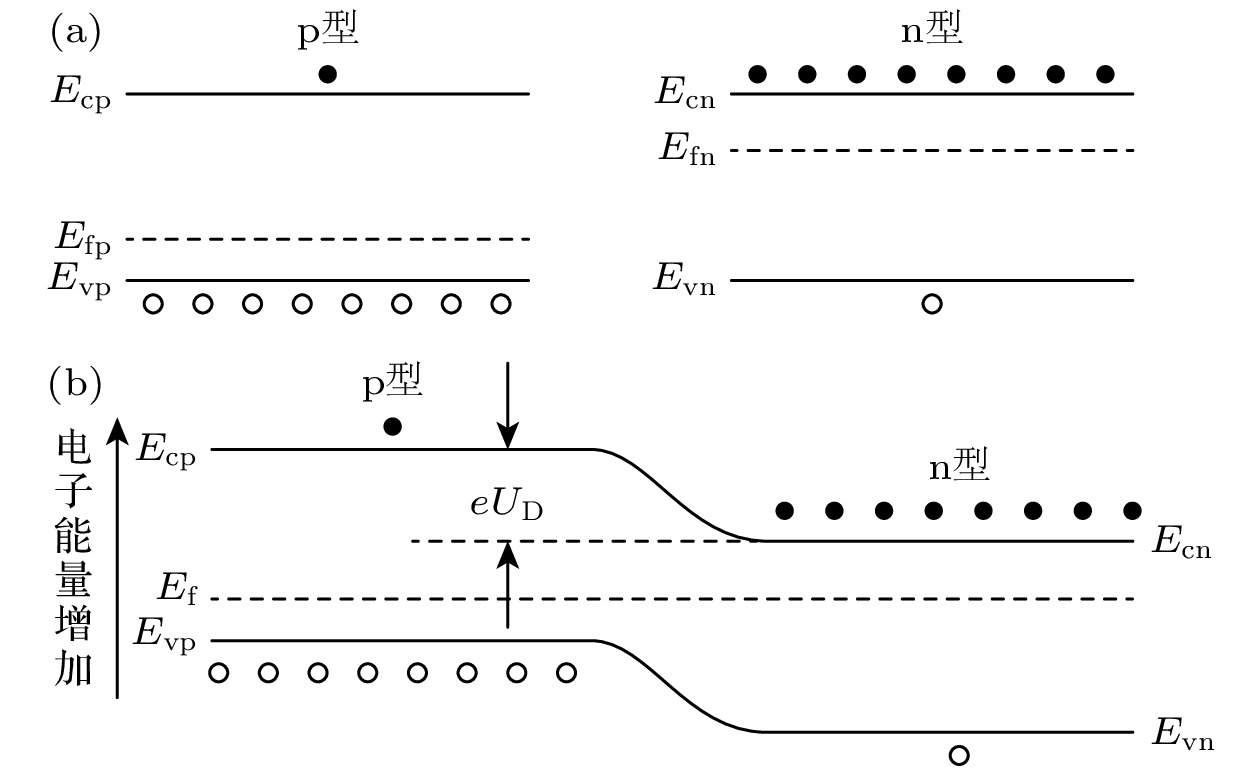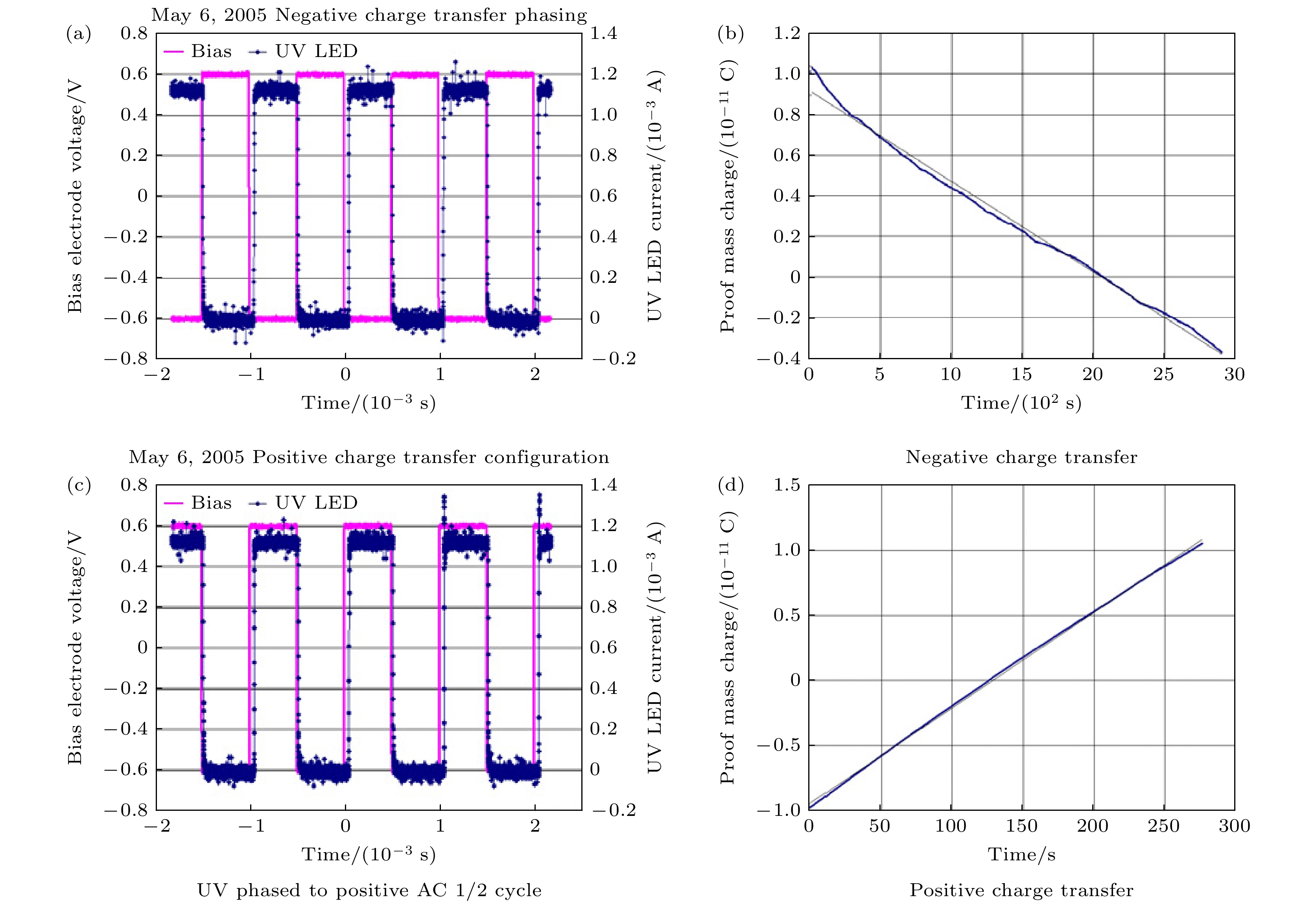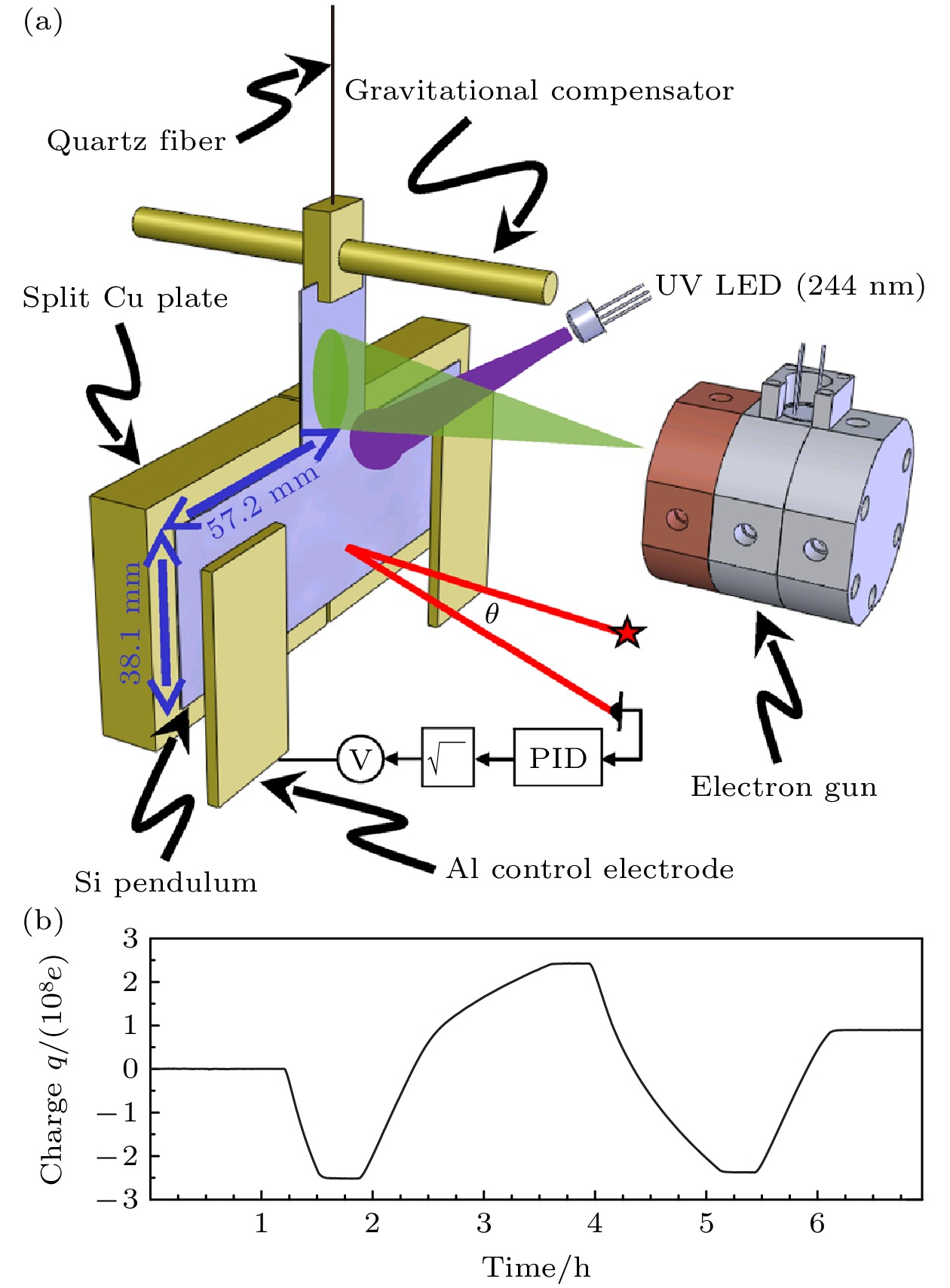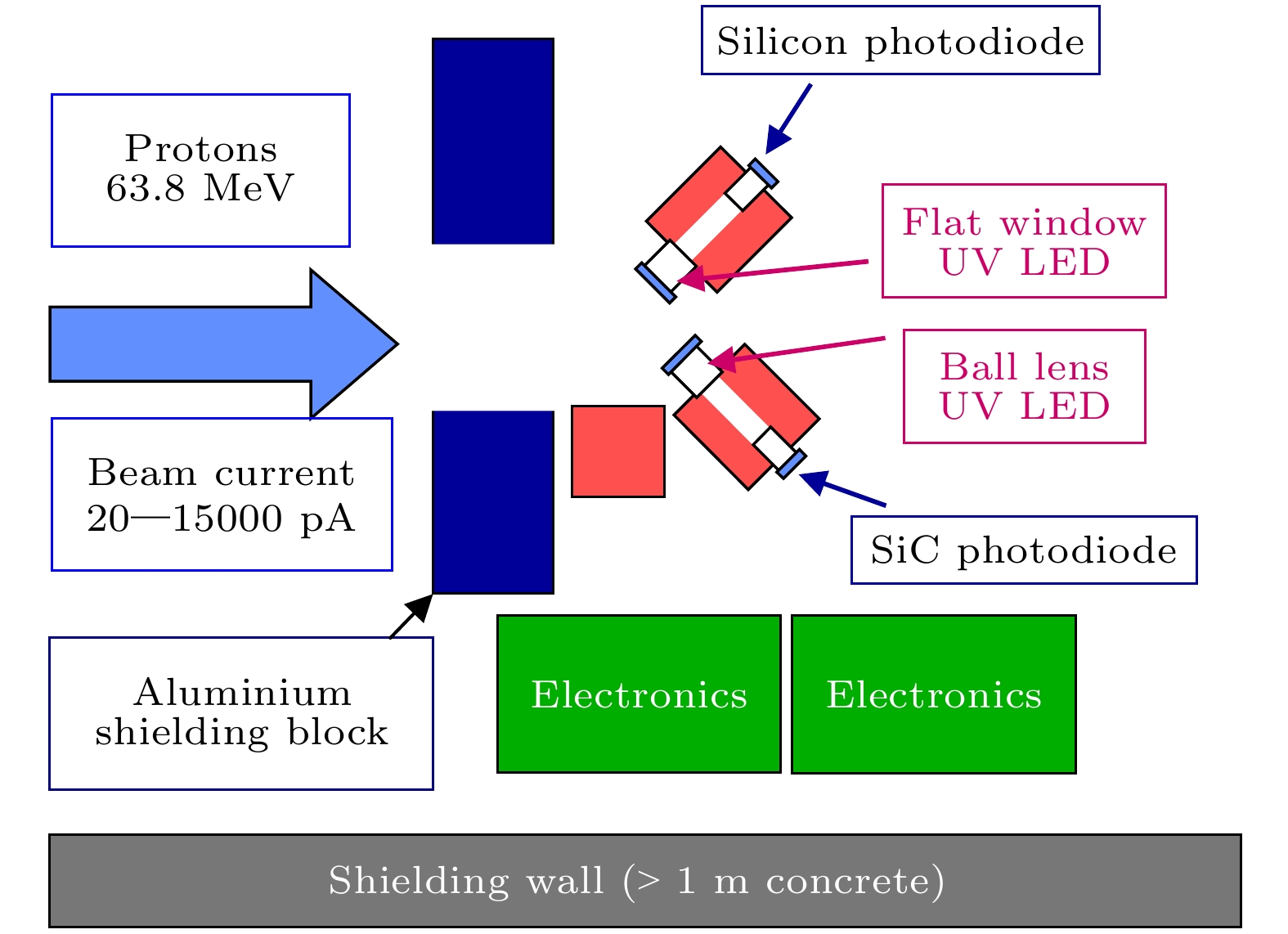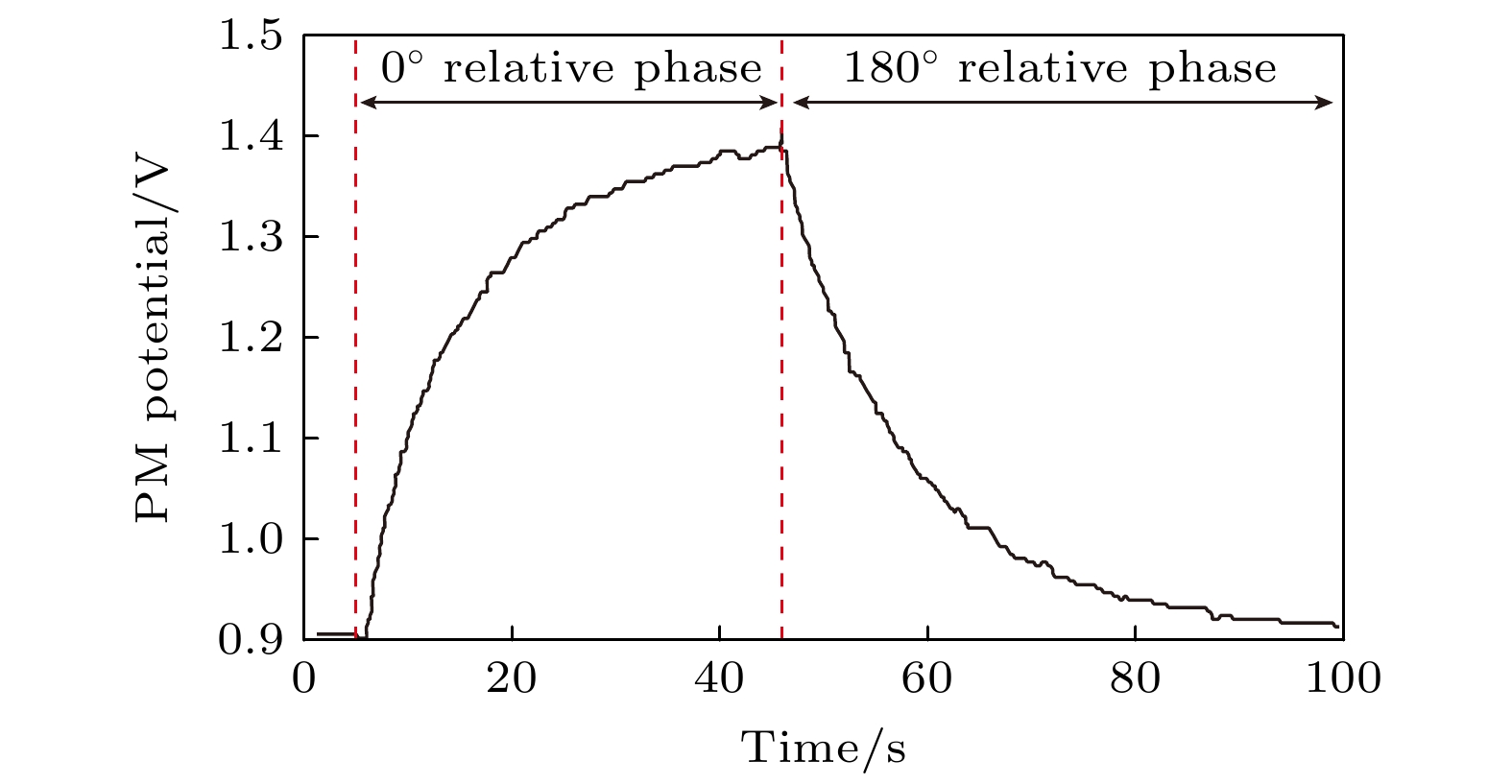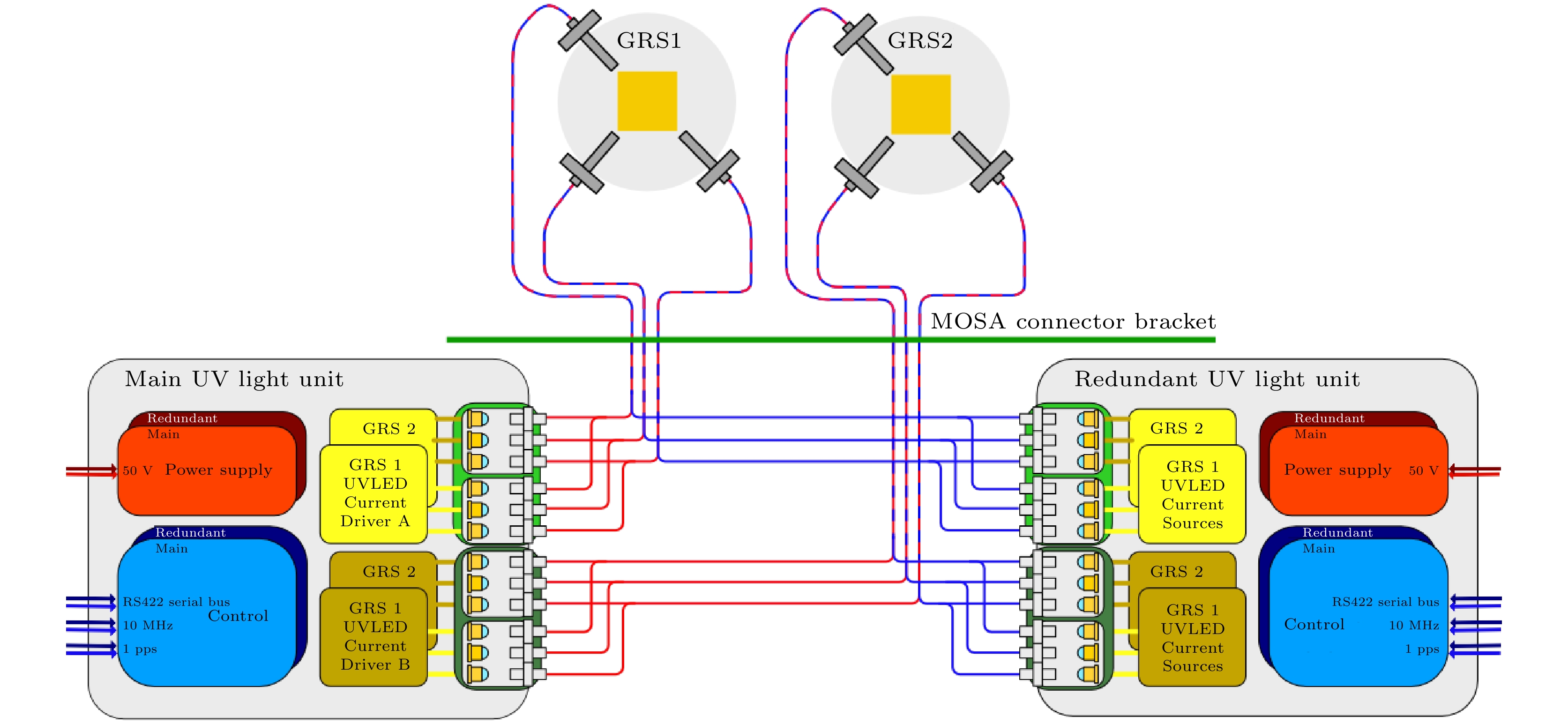-
引力波是物质和能量的剧烈运动和变化所产生的一种物质波, 通过探测引力波可以使得人类从另一个角度去观测宇宙. 在空间引力波探测的过程中, 惯性传感器中的检验质量会受到太空环境中粒子和射线的作用而积累电荷, 影响了引力波探测的精度, 因此需要对检验质量上的电荷进行控制, 即开展电荷管理. 在以往的电荷管理系统中应用紫外汞灯和紫外(UV) LED作为光源, 取得了不同的效果. 本文主要综述了空间引力波探测中电荷管理系统的紫外光源研究进展. 汞灯作为第1代系统光源, 虽能完成任务, 但有着启动慢、功耗高等缺点. UV LED凭借其体积、功耗等方面的优点, 逐步成为目前电荷管理系统的光源. 近年来, 随着紫外微型LED (UV micro-LED)技术的成熟, 其较高的外量子效率和良好的可靠性展示出应用于电荷管理系统的潜力, 是未来电荷管理系统可选择的紫外光源之一.Gravitational waves are a kind of matter wave, which is caused by the violent motion and changes of matter and energy. Detecting gravitational waves allows people to observe the universe from a new perspective. In the process of gravitational wave detection, high-energy particles and cosmic rays in space can penetrate the exterior of the spacecraft and reach the surface of the inertial sensor’s test mass (TM), continuously accumulating charges. Once the charge on the TM exceeds a certain threshold, the electrostatic forces between the TM and surrounding conductors generate significant acceleration noise, which will affect the measurement accuracy of the inertial sensors and, consequently, the success of the gravitational wave detection mission. Therefore, controlling the charge on the TM surface, known as charge management, is essential. The most commonly used charge management method is based on the photoelectric effect, using ultraviolet (UV) light to control the potential between the surface of the TM and the surrounding conductors. In previous charge management systems (CMSs), UV mercury lamps and UV light-emitting diodes (LEDs) were used as light sources, achieving varying levels of success. This paper mainly reviews the research progress of UV light sources in CMS for space gravitational wave detection. Mercury lamps, as the first-generation system light sources, can fulfill the mission but have some drawbacks such as slow startup, high power consumption and significant electromagnetic interference. UV LEDs, because of their advantages in size and weight, have gradually become the current light source for CMS. In recent years, with the development of UV micro-LED technology, UV micro-LEDs have achieved higher external quantum efficiency and lower power consumption, demonstrating their potential applications in CMS, and becoming a promising UV light source for future charge management systems.
-
Keywords:
- charge management /
- ultraviolet /
- LED /
- micro-LED
[1] Cai R G, Cao Z K, Guo Z K, Wang S J, Yang T 2017 Natl. Sci. Rev. 4 687
 Google Scholar
Google Scholar
[2] Fryer C L, New K C B 2011 Living Rev. Relativ. 14 1
 Google Scholar
Google Scholar
[3] Collaboration T L S, Aasi J E A 2015 Classical Quant. Grav. 32 074001
 Google Scholar
Google Scholar
[4] Abbott B P, Abbott R, Abbott T D, Acernese F, Ackley K, Adams C, Cao J 2017 Phys. Rev. Lett. 118 221101
 Google Scholar
Google Scholar
[5] Abbott B P, Abbott R, Abbott T D, Abernathy M R, Acernese F, Ackley K, Cerretani G 2016 Phys. Rev. Lett. 116 221101
 Google Scholar
Google Scholar
[6] Danzmann K, Rüdiger A 2003 Classical Quant. Grav. 20 S1
 Google Scholar
Google Scholar
[7] Hollington D 2011 Ph. D. Dissertation (London: Imperial College
[8] Pau Amaro-Seoane, Heather Audley, Stanislav Babak 2017 arXiv: 1702.00786 [astro-ph. IM]
[9] Hu W R, Wu Y L 2017 Natl. Sci. Rev. 4 685
 Google Scholar
Google Scholar
[10] Luo J, Chen L S, Duan H Z, Gong Y G, Hu S, Ji J, Zhou Z B 2016 Classical Quant. Grav. 33 035010
 Google Scholar
Google Scholar
[11] Wang H T, Jiang Z, Sesana A, Barausse E, Huang S J, Wang Y F, Luo J 2019 Phys. Rev. D 100 043003
 Google Scholar
Google Scholar
[12] Hu X C, Li X H, Wang Y, Feng W F, Zhou M Y, Hu Y M, Shao C G 2018 Classical Quant. Grav. 35 095008
 Google Scholar
Google Scholar
[13] Armano M, Audley H, Baird J, Binetruy P, Born M, Bortoluzzi D, Zweifel P 2018 Phys. Rev. Lett. 120 061101
 Google Scholar
Google Scholar
[14] Araújo H M, Wass P, Shaul D, Rochester G, Sumner T J 2005 Astropart. Phys. 22 451
 Google Scholar
Google Scholar
[15] Wass P J, Araújo H M, Shaul D N A, Sumner T J 2005 Classical Quant. Grav. 22 S311
 Google Scholar
Google Scholar
[16] Tapley B D, Bettadpur S, Ries J C, Thompson P F, Watkins M M 2004 Science 305 503
 Google Scholar
Google Scholar
[17] Muzi D, Allasio A 2004 Acta Astronaut. 54 167
 Google Scholar
Google Scholar
[18] Christophe B, Boulanger D, Foulon B, Huynh P A, Lebat V, Liorzou F, Perrot E 2015 Acta Astronaut. 117 1
 Google Scholar
Google Scholar
[19] Buchman S, Quinn T, Keiser G M, Gill D, Sumner T J 1995 Rev. Sci. Instrum. 66 120
 Google Scholar
Google Scholar
[20] Armano M, Audley H, Baird J, Binetruy P, Born M, Bortoluzzi D (LISA Pathfinder Collaboration) 2018 Phys. Rev. D 98 062001
 Google Scholar
Google Scholar
[21] Armano M, Audley H, Auger G, Baird J T, Binetruy P, Born M (LISA Pathfinder Collaboration) 2017 Phys. Rev. Lett. 118 171101
 Google Scholar
Google Scholar
[22] Schulte M O, Shaul D N A, Hollington D, Waschke S, Sumner T J, Wass P J, Nannarone S 2009 Classical Quant. Grav. 26 094008
 Google Scholar
Google Scholar
[23] 杨泉锋 2020 硕士学位论文 (武汉: 华中科技大学)
Yang Q F 2020 M. S. Thesis (Wuhan: Huazhong University of Science and Technology
[24] Kitsinelis S, Zissis G, Fokitis E 2009 J. Phys. D: Appl. Phys. 42 045209
 Google Scholar
Google Scholar
[25] Buchman S, Everitt C W F, Parkinson B, Turneaure J P, Brumley R, Gill D, Xiao Y 2000 Adv. Space Res. 25 1181
 Google Scholar
Google Scholar
[26] Conklin J W, forthe Gravity Probe B Collaboration 2008 J. Phys. Conf. Ser. 140 012001
 Google Scholar
Google Scholar
[27] Sumner T J, Shaul D N A, Schulte M O, Waschke S, Hollington D, Araújo H 2009 Classical Quant. Grav. 26 094006
 Google Scholar
Google Scholar
[28] Ke X 2024 Handbook of Optical Wireless Communication pp1257–1306
[29] Shockley W 1949 Bell Syst. Tech. J 28 435
 Google Scholar
Google Scholar
[30] Balakrishnan K, Sun K X, Alfauwaz A, Aljadaan A, Almajeed M, Alrufaydah M, Zoellner A 2012 arXiv: 1202.0585 [physics. ins-det]
[31] Sun K X, Allard B, Buchman S, Williams S, Byer R L 2006 Classical Quant. Grav. 23 S141
 Google Scholar
Google Scholar
[32] Pollack S E, Turner M D, Schlamminger S, Hagedorn C A, Gundlach J H 2010 Phys. Rev. D 81 021101
 Google Scholar
Google Scholar
[33] Sun K X, Leindecker N, Higuchi S, Goebel J, Buchman S, Byer R L 2009 J. Phys. Conf. Ser. 154 012028
 Google Scholar
Google Scholar
[34] Hollington D, Baird J T, Sumner T J, Wass P J 2017 Classical Quant. Grav. 34 205009
 Google Scholar
Google Scholar
[35] Hollington D, Baird J T, Sumner T J, Wass P J 2015 Classical Quant. Grav. 32 235020
 Google Scholar
Google Scholar
[36] Letson B C 2022 Ph. D. Dissertation (Florida: University of Florida
[37] Pi X H, Liu Q, Xu J H, Zhu L, Wang Q L, Zhang Y T, Yang S Q, Luo J 2023 Classical Quant. Grav. 40 035005
 Google Scholar
Google Scholar
[38] Kenyon S P, Letson B, Clark M, Olatunde T, Ritten L, Schindler J, Sumner T J 2021 IEEE Aerospace Conference 50100 p1
 Google Scholar
Google Scholar
[39] Gong Z, Jin S R, Chen Y J, McKendry J, Massoubre D, Watson I, Dawson M D 2010 J. Appl. Phys. 107 013103
 Google Scholar
Google Scholar
[40] Tian P F, McKendry J J, Gong Z, Guilhabert B, Watson I M, Gu E, Dawson M D 2012 Appl. Phys. Lett. 101 23
 Google Scholar
Google Scholar
[41] Tian P F, Althumali A, Gu E D, Watson I M, Dawson M D, Liu R 2016 Semicond. Sci. Technol. 31 045005
 Google Scholar
Google Scholar
[42] Qian Z Y, Zhu S J, Shan X Y, Yin P, Yuan Z X, Qiu P J, Tian P F 2022 J. Phys. D: Appl. Phys. 55 195104
 Google Scholar
Google Scholar
[43] Zhu S J, Qiu P J, Qian Z Y, Shan X Y, Wang Z, Jiang K, Tian P F 2021 Opt. Lett. 46 2147
 Google Scholar
Google Scholar
[44] He X Y, Xie E Y, Islim M S, Purwita A, McKendry J J D, Gu E, Haas H, Dawson M D2018 International Conference on UV LED Technologies & Applications Conference (ICULTA-2018) Berlin, Germany, April, 2018 pB41
[45] Yu H B, Memon M H, Wang D H, Ren Z J, Zhang H C, Huang C, Tian M, Sun H D, Long S B 2021 Opt. Lett. 46 3271
 Google Scholar
Google Scholar
[46] Floyd R, Gaevski M, Hussain K, Mamun A, Chandrashekhar M V S, Simin G, Khan A 2021 Appl. Phys. Express 14 084002
 Google Scholar
Google Scholar
[47] Jia J X, Ruan Y D, Gu Y N, Zhang Z H, Zhang S D, Guo R Q, Cui X G, Tian P F 2024 Opt. Express 32 22321
 Google Scholar
Google Scholar
[48] Tian P F, Shan X Y, Zhu S J, Xie E Y, McKendry J D, Gu E D, Dawson M D 2022 IEEE J. Quantum Elect. 58 1
 Google Scholar
Google Scholar
[49] Gu Y N, Zhang Z H, Tian P F 2024 The 7th International Workshop on Ultraviolet Materials and Devices Taibei, China, Jun 2–5, 2024 p1
[50] 田朋飞 2024 中国专利 CN 221485664U
Tian P F 2024 China Patent CN 221485664U
[51] Ruan Y D, Li H G, Jia J X, Gu Y N, Zhang Z H, Shen D Q, Hong W, Cui X G, Zhang S D, Bai Y Z, Tian P F 2025 Opt. Laser Technol. 181 111902
 Google Scholar
Google Scholar
[52] Zhao Z Q, Shan X Y, Zhu S J, Qian Z Y, Cui X G, Zhang S D, Tian P F 2023 19th China International Forum on Solid State Lighting & 2022 8th International Forum on Wide Bandgap Semiconductors (SSLCHINA: IFWS) Suzhou, China, February 7–10, 2023 p312
[53] 杨方超 2020 博士学位论文 (武汉: 华中科技大学)
Yang F C 2020 Ph. D. Dissertation (Wuhan: Huazhong University of Science and Technology
[54] Yang F C, Bai Y Z, Hong W, Li H G, Liu L, Sumner T J, Yang Q F, Zhao Y J, Zhou Z B 2020 Classical Quant. Grav. 37 115005
 Google Scholar
Google Scholar
[55] Lu S P, Bai J X, Li H B, Jiang K, Ben J W, Zhang S L, Zhang Z H, Sun X J, Li D B 2024 J. Semicond. 45 012504
 Google Scholar
Google Scholar
[56] Pandey A, Mi Z T 2022 IEEE J. Quantum Elect. 58 3300313
 Google Scholar
Google Scholar
[57] Floyd R, Gaevski M, Alam M D, Islam S, Hussain K, Mamun A, Khan A 2020 Appl. Phys. Express 14 014002
 Google Scholar
Google Scholar
[58] Xiao S D, Yu H B, Memon M H, Jia H F, Luo Y M, Wang R 2023 IEEE Elect. Device Lett. 44 1520
 Google Scholar
Google Scholar
-
图 3 天琴引力波探测计划的初步概念, 以J0806为参考源, 3艘“天琴号”航天器分别表示为SC1, SC2和SC3, 还显示了赤道平面, 以及天空中朝向J0806的方向[10]
Fig. 3. Preliminary concept of the TianQin gravitational wave detection mission with J0806 as the reference source. The three “TianQin” spacecraft are denoted as SC1, SC2, and SC3, and the equatorial plane as well as the direction towards J0806 in the sky are also shown[10].
图 4 LISA计划中惯性传感器敏感探头结构示意图[7]. 传感电极以绿色显示, 注入电极以红色显示. 它们对检验质量施加5.4 V, 100 kHz的交流偏置, 以便在检验质量上产生0.61 V的交流电位. 同时, 通过在传感电极上施加不同的直流电压组合, 就可以驱动检验质量在内部自由浮动, 且在x轴上执行干涉测量
Fig. 4. Diagram of the inertial sensor sensitive probe structure in the LISA mission[7]. The sensing electrodes are shown in green, and the injection electrodes are shown in red. They apply a 5.4 V, 100 kHz AC bias to the test mass, resulting in a 0.61 V AC potential on the test mass. Additionally, by applying different combinations of DC voltages to the sensing electrodes, the test mass can be driven to float freely inside and perform interferometry along the x-axis.
图 5 GRACE FO中加速度计的机械核心, 由18 g的超低膨胀材料立方检验质量组成, 周围环绕着3对类似的电极板, 每对电极板控制两个自由度[18]
Fig. 5. Mechanical core of the accelerometer in GRACE FO, consisting of an 18 g cubic test mass made of ultra-low expansion material, surrounded by three pairs of similar electrode plates, each pair controlling two degrees of freedom[18].
图 8 (a)在陀螺仪中测量紫外线产生电流的装置图; (b)采用254 nm紫外光对运转陀螺仪进行电荷控制, 施加+18, –18和0 V的偏置电压[19]
Fig. 8. (a) Diagram of the device for measuring the current generated by ultraviolet light in a gyroscope; (b) charge control of the operating gyroscope using 254 nm ultraviolet light, applying bias voltages of +18 V, –18 V, and 0 V[19].
图 12 交流充电管理实验[31] (a), (c)左边的数字说明了用于控制负电荷和正电荷转移的相位控制, 图中噪声较强的迹线和噪声较小的迹线分别是UV LED和电极的驱动信号; (b), (d)电荷转移的方向
Fig. 12. AC charge management experiment[31]: (a), (c) Numbers on the left indicate the phase control used for managing negative and positive charge transfer, the traces with stronger and weaker noise correspond to the driving signals of the UV LED and the electrodes, respectively; (b), (d) illustrate the direction of charge transfer.
图 13 (a)扭秤实验装置示意图, 装置由一个悬挂的矩形金涂层硅摆板、一个略大的可移动金涂层铜板和一个金涂层的铝控制电极组成, 通过自动准直仪光学测量摆板的扭转位移, 并利用PID回路控制电极上的电压, 以维持摆板的固定角度, 此外, 图中还标出了用于从摆板移除和添加电子的UV LED和电子枪. (b)摆板充放电实验结果示意图[32]
Fig. 13. (a) Schematic diagram of the torsion balance experimental setup. The setup consists of a suspended rectangular gold-coated silicon vane, a slightly larger movable gold-coated copper plate, and a gold-coated aluminum control electrode. The vane’s torsional displacement is measured optically using an auto-collimator, and the voltage on the electrode is controlled via a PID loop to maintain the vane at a fixed angle. Additionally, the UV LED and electron gun used for removing and adding electrons to the vane are indicated in the figure. (b) Schematic diagram of the vane charging and discharging experiment results[32].
图 14 (a) UV LED在氮气中的工作寿命测试达到19000 h以上; (b) UV LED在真空中的工作寿命测试达到8000 h以上; (c) UV LED在氮气中运行10500 h后中心波长偏移在2 nm以内[33]
Fig. 14. (a) UV LED operational lifetime test in nitrogen reaching over 19000 hours; (b) UV LED operational lifetime test in vacuum reaching over 8000 hours; (c) the center wavelength shift of the UV LED after operating for 10500 hours in nitrogen is within 2 nm[33].
图 15 质子辐射下UV LED测试的实验装置布局(俯视图), 回旋加速器输出质子束, 两个255 nm波长的UV LED被安置于质子束流的路径中, 模拟太空飞行条件, 并实时监测其光输出[33]
Fig. 15. Experimental setup layout for UV LED testing under proton radiation (top view). A cyclotron accelerates and outputs a proton beam, with two UV LEDs emitting at 255 nm placed in the path of the proton beam to simulate spaceflight conditions, and their light output is monitored in real-time[33].
图 17 UV LED测试前、热真空循环后、振动后、热循环后(测试后)的数据采集[30] (a)电流随电压变化情况; (b)光功率随电流变化情况; (c)光谱变化情况
Fig. 17. Data collected of the UV LED before testing, after thermal vacuum cycling, after vibration, and after thermal cycling (post-testing) are shown[30]: (a) Current versus voltage; (b) optical power versus current; (c) and spectral changes.
图 18 在交流电荷控制方式下使用浮动探针测量的检验质量电位, 电势是相对于固定在地面上的系统外壳来测量的, 入射紫外功率为10 μW, 调制频率为100 Hz, 占空比为50%, 偏置为3.0 Vpp, 对地的防护质量电容为17 pF[30]
Fig. 18. Test mass potential measured using a floating probe under AC charge control. The potential is measured relative to the system’s ground-fixed enclosure. The incident UV power is 10 μW. Modulation frequency is 100 Hz. Duty cycle is 50%, and bias is 3.0 Vpp. The guard mass capacitance to ground is 17 pF[30].
图 19 LISA电荷管理系统功能框图, 包括两个ULU, 其中一个作为冗余, 保证GRS中的检验质量电荷能得到有效管理, 每个ULU包括供能、控制、光输出模块, 各有12个UV LED为两个检验质量提供光源[36]
Fig. 19. Functional block diagram of the LISA charge management system, including two ULUs, one of which serves as a redundancy to ensure effective charge management of the test masses in the GRS. Each ULU consists of power supply, control, and light output modules, with 12 UV LEDs providing light sources for the two test masses[36].
图 20 脉冲调制示意图, UV LED与GRS中的100 kHz的注入信号同步脉冲, 通过调整100 kHz电场的方向调整紫外光的相位, 实现对检验质量电荷的调控[36]
Fig. 20. Pulse modulation schematic, where the UV LED is synchronized with the 100 kHz injection signal in the GRS, by adjusting the direction of the 100 kHz electric field. The phase of the ultraviolet light is adjusted to regulate the charge on the test mass[36].
表 1 不同团队有关汞灯、UV LED研究内容对比
Table 1. Comparison of mercury lamps and UV LED research content among different teams.
研究团队 光源类型 研究内容 Buchman等[19] 汞灯 将陀螺仪表面的电荷控制在15 mV以内, 初步证明
了汞灯在电荷管理系统中作为光源的可行性Buchman等[25] 汞灯 长时间的运行证明了汞灯的精度和可靠性 Conklin等[26] 汞灯 进行了控制陀螺仪转子的充放电实验 Armano等[20,21] 汞灯 研发了基于汞灯的电荷管理系统用于LPF任务 Sun等[31,33] UV LED 验证了UV LED用于电荷管理系统的可行性与优越性;
对UV LED进行了老化测试与抗辐照测试Pollack等[32] UV LED 成功实现了对扭摆上电荷的充放电控制 Balakrishnan等[30] UV LED 对UV LED 进行了热循环和振动作用下的稳定性测试 Hollington等[34,35] UV LED 对更短波长的UV LED进行了老化测试;
对3种商用UV LED进行了一系列
测试以评估是否可用于太空任务表 2 用于电荷管理系统(CMS)的紫外光源对比
Table 2. Comparison of ultraviolet light sources for the charge management system (CMS).
参数名称 紫外汞灯[31] UV LED[53,54] UV micro-LED[49,51] 电源功耗/W 15 1 ~3×10–3 电磁干扰 大 小 小 质量/kg 3.5 0.3 0.1 电荷管理系统尺寸 17 cm×13 cm×17 cm 10 cm×8 cm×3 cm 7 cm×5 cm×4 cm 出射的紫外光功率/μW ~120 ~100 ~105 光纤尾端出射的功率/μW ~11 ~16 ~16 中心波长/nm 194—254 257 253 快速调制能力 实现困难 通过对驱动电流进行调制 可直流、脉冲调制 电荷控制手段 只能使用DC AC和DC AC和DC 电荷控制频率 信号带宽内部 处于信号带宽之外 处于信号带宽之外 动态范围 100 105 106 电荷管理分辨率 低 高 更高 电荷控制速率 低 高 高 -
[1] Cai R G, Cao Z K, Guo Z K, Wang S J, Yang T 2017 Natl. Sci. Rev. 4 687
 Google Scholar
Google Scholar
[2] Fryer C L, New K C B 2011 Living Rev. Relativ. 14 1
 Google Scholar
Google Scholar
[3] Collaboration T L S, Aasi J E A 2015 Classical Quant. Grav. 32 074001
 Google Scholar
Google Scholar
[4] Abbott B P, Abbott R, Abbott T D, Acernese F, Ackley K, Adams C, Cao J 2017 Phys. Rev. Lett. 118 221101
 Google Scholar
Google Scholar
[5] Abbott B P, Abbott R, Abbott T D, Abernathy M R, Acernese F, Ackley K, Cerretani G 2016 Phys. Rev. Lett. 116 221101
 Google Scholar
Google Scholar
[6] Danzmann K, Rüdiger A 2003 Classical Quant. Grav. 20 S1
 Google Scholar
Google Scholar
[7] Hollington D 2011 Ph. D. Dissertation (London: Imperial College
[8] Pau Amaro-Seoane, Heather Audley, Stanislav Babak 2017 arXiv: 1702.00786 [astro-ph. IM]
[9] Hu W R, Wu Y L 2017 Natl. Sci. Rev. 4 685
 Google Scholar
Google Scholar
[10] Luo J, Chen L S, Duan H Z, Gong Y G, Hu S, Ji J, Zhou Z B 2016 Classical Quant. Grav. 33 035010
 Google Scholar
Google Scholar
[11] Wang H T, Jiang Z, Sesana A, Barausse E, Huang S J, Wang Y F, Luo J 2019 Phys. Rev. D 100 043003
 Google Scholar
Google Scholar
[12] Hu X C, Li X H, Wang Y, Feng W F, Zhou M Y, Hu Y M, Shao C G 2018 Classical Quant. Grav. 35 095008
 Google Scholar
Google Scholar
[13] Armano M, Audley H, Baird J, Binetruy P, Born M, Bortoluzzi D, Zweifel P 2018 Phys. Rev. Lett. 120 061101
 Google Scholar
Google Scholar
[14] Araújo H M, Wass P, Shaul D, Rochester G, Sumner T J 2005 Astropart. Phys. 22 451
 Google Scholar
Google Scholar
[15] Wass P J, Araújo H M, Shaul D N A, Sumner T J 2005 Classical Quant. Grav. 22 S311
 Google Scholar
Google Scholar
[16] Tapley B D, Bettadpur S, Ries J C, Thompson P F, Watkins M M 2004 Science 305 503
 Google Scholar
Google Scholar
[17] Muzi D, Allasio A 2004 Acta Astronaut. 54 167
 Google Scholar
Google Scholar
[18] Christophe B, Boulanger D, Foulon B, Huynh P A, Lebat V, Liorzou F, Perrot E 2015 Acta Astronaut. 117 1
 Google Scholar
Google Scholar
[19] Buchman S, Quinn T, Keiser G M, Gill D, Sumner T J 1995 Rev. Sci. Instrum. 66 120
 Google Scholar
Google Scholar
[20] Armano M, Audley H, Baird J, Binetruy P, Born M, Bortoluzzi D (LISA Pathfinder Collaboration) 2018 Phys. Rev. D 98 062001
 Google Scholar
Google Scholar
[21] Armano M, Audley H, Auger G, Baird J T, Binetruy P, Born M (LISA Pathfinder Collaboration) 2017 Phys. Rev. Lett. 118 171101
 Google Scholar
Google Scholar
[22] Schulte M O, Shaul D N A, Hollington D, Waschke S, Sumner T J, Wass P J, Nannarone S 2009 Classical Quant. Grav. 26 094008
 Google Scholar
Google Scholar
[23] 杨泉锋 2020 硕士学位论文 (武汉: 华中科技大学)
Yang Q F 2020 M. S. Thesis (Wuhan: Huazhong University of Science and Technology
[24] Kitsinelis S, Zissis G, Fokitis E 2009 J. Phys. D: Appl. Phys. 42 045209
 Google Scholar
Google Scholar
[25] Buchman S, Everitt C W F, Parkinson B, Turneaure J P, Brumley R, Gill D, Xiao Y 2000 Adv. Space Res. 25 1181
 Google Scholar
Google Scholar
[26] Conklin J W, forthe Gravity Probe B Collaboration 2008 J. Phys. Conf. Ser. 140 012001
 Google Scholar
Google Scholar
[27] Sumner T J, Shaul D N A, Schulte M O, Waschke S, Hollington D, Araújo H 2009 Classical Quant. Grav. 26 094006
 Google Scholar
Google Scholar
[28] Ke X 2024 Handbook of Optical Wireless Communication pp1257–1306
[29] Shockley W 1949 Bell Syst. Tech. J 28 435
 Google Scholar
Google Scholar
[30] Balakrishnan K, Sun K X, Alfauwaz A, Aljadaan A, Almajeed M, Alrufaydah M, Zoellner A 2012 arXiv: 1202.0585 [physics. ins-det]
[31] Sun K X, Allard B, Buchman S, Williams S, Byer R L 2006 Classical Quant. Grav. 23 S141
 Google Scholar
Google Scholar
[32] Pollack S E, Turner M D, Schlamminger S, Hagedorn C A, Gundlach J H 2010 Phys. Rev. D 81 021101
 Google Scholar
Google Scholar
[33] Sun K X, Leindecker N, Higuchi S, Goebel J, Buchman S, Byer R L 2009 J. Phys. Conf. Ser. 154 012028
 Google Scholar
Google Scholar
[34] Hollington D, Baird J T, Sumner T J, Wass P J 2017 Classical Quant. Grav. 34 205009
 Google Scholar
Google Scholar
[35] Hollington D, Baird J T, Sumner T J, Wass P J 2015 Classical Quant. Grav. 32 235020
 Google Scholar
Google Scholar
[36] Letson B C 2022 Ph. D. Dissertation (Florida: University of Florida
[37] Pi X H, Liu Q, Xu J H, Zhu L, Wang Q L, Zhang Y T, Yang S Q, Luo J 2023 Classical Quant. Grav. 40 035005
 Google Scholar
Google Scholar
[38] Kenyon S P, Letson B, Clark M, Olatunde T, Ritten L, Schindler J, Sumner T J 2021 IEEE Aerospace Conference 50100 p1
 Google Scholar
Google Scholar
[39] Gong Z, Jin S R, Chen Y J, McKendry J, Massoubre D, Watson I, Dawson M D 2010 J. Appl. Phys. 107 013103
 Google Scholar
Google Scholar
[40] Tian P F, McKendry J J, Gong Z, Guilhabert B, Watson I M, Gu E, Dawson M D 2012 Appl. Phys. Lett. 101 23
 Google Scholar
Google Scholar
[41] Tian P F, Althumali A, Gu E D, Watson I M, Dawson M D, Liu R 2016 Semicond. Sci. Technol. 31 045005
 Google Scholar
Google Scholar
[42] Qian Z Y, Zhu S J, Shan X Y, Yin P, Yuan Z X, Qiu P J, Tian P F 2022 J. Phys. D: Appl. Phys. 55 195104
 Google Scholar
Google Scholar
[43] Zhu S J, Qiu P J, Qian Z Y, Shan X Y, Wang Z, Jiang K, Tian P F 2021 Opt. Lett. 46 2147
 Google Scholar
Google Scholar
[44] He X Y, Xie E Y, Islim M S, Purwita A, McKendry J J D, Gu E, Haas H, Dawson M D2018 International Conference on UV LED Technologies & Applications Conference (ICULTA-2018) Berlin, Germany, April, 2018 pB41
[45] Yu H B, Memon M H, Wang D H, Ren Z J, Zhang H C, Huang C, Tian M, Sun H D, Long S B 2021 Opt. Lett. 46 3271
 Google Scholar
Google Scholar
[46] Floyd R, Gaevski M, Hussain K, Mamun A, Chandrashekhar M V S, Simin G, Khan A 2021 Appl. Phys. Express 14 084002
 Google Scholar
Google Scholar
[47] Jia J X, Ruan Y D, Gu Y N, Zhang Z H, Zhang S D, Guo R Q, Cui X G, Tian P F 2024 Opt. Express 32 22321
 Google Scholar
Google Scholar
[48] Tian P F, Shan X Y, Zhu S J, Xie E Y, McKendry J D, Gu E D, Dawson M D 2022 IEEE J. Quantum Elect. 58 1
 Google Scholar
Google Scholar
[49] Gu Y N, Zhang Z H, Tian P F 2024 The 7th International Workshop on Ultraviolet Materials and Devices Taibei, China, Jun 2–5, 2024 p1
[50] 田朋飞 2024 中国专利 CN 221485664U
Tian P F 2024 China Patent CN 221485664U
[51] Ruan Y D, Li H G, Jia J X, Gu Y N, Zhang Z H, Shen D Q, Hong W, Cui X G, Zhang S D, Bai Y Z, Tian P F 2025 Opt. Laser Technol. 181 111902
 Google Scholar
Google Scholar
[52] Zhao Z Q, Shan X Y, Zhu S J, Qian Z Y, Cui X G, Zhang S D, Tian P F 2023 19th China International Forum on Solid State Lighting & 2022 8th International Forum on Wide Bandgap Semiconductors (SSLCHINA: IFWS) Suzhou, China, February 7–10, 2023 p312
[53] 杨方超 2020 博士学位论文 (武汉: 华中科技大学)
Yang F C 2020 Ph. D. Dissertation (Wuhan: Huazhong University of Science and Technology
[54] Yang F C, Bai Y Z, Hong W, Li H G, Liu L, Sumner T J, Yang Q F, Zhao Y J, Zhou Z B 2020 Classical Quant. Grav. 37 115005
 Google Scholar
Google Scholar
[55] Lu S P, Bai J X, Li H B, Jiang K, Ben J W, Zhang S L, Zhang Z H, Sun X J, Li D B 2024 J. Semicond. 45 012504
 Google Scholar
Google Scholar
[56] Pandey A, Mi Z T 2022 IEEE J. Quantum Elect. 58 3300313
 Google Scholar
Google Scholar
[57] Floyd R, Gaevski M, Alam M D, Islam S, Hussain K, Mamun A, Khan A 2020 Appl. Phys. Express 14 014002
 Google Scholar
Google Scholar
[58] Xiao S D, Yu H B, Memon M H, Jia H F, Luo Y M, Wang R 2023 IEEE Elect. Device Lett. 44 1520
 Google Scholar
Google Scholar
计量
- 文章访问数: 6761
- PDF下载量: 133
- 被引次数: 0













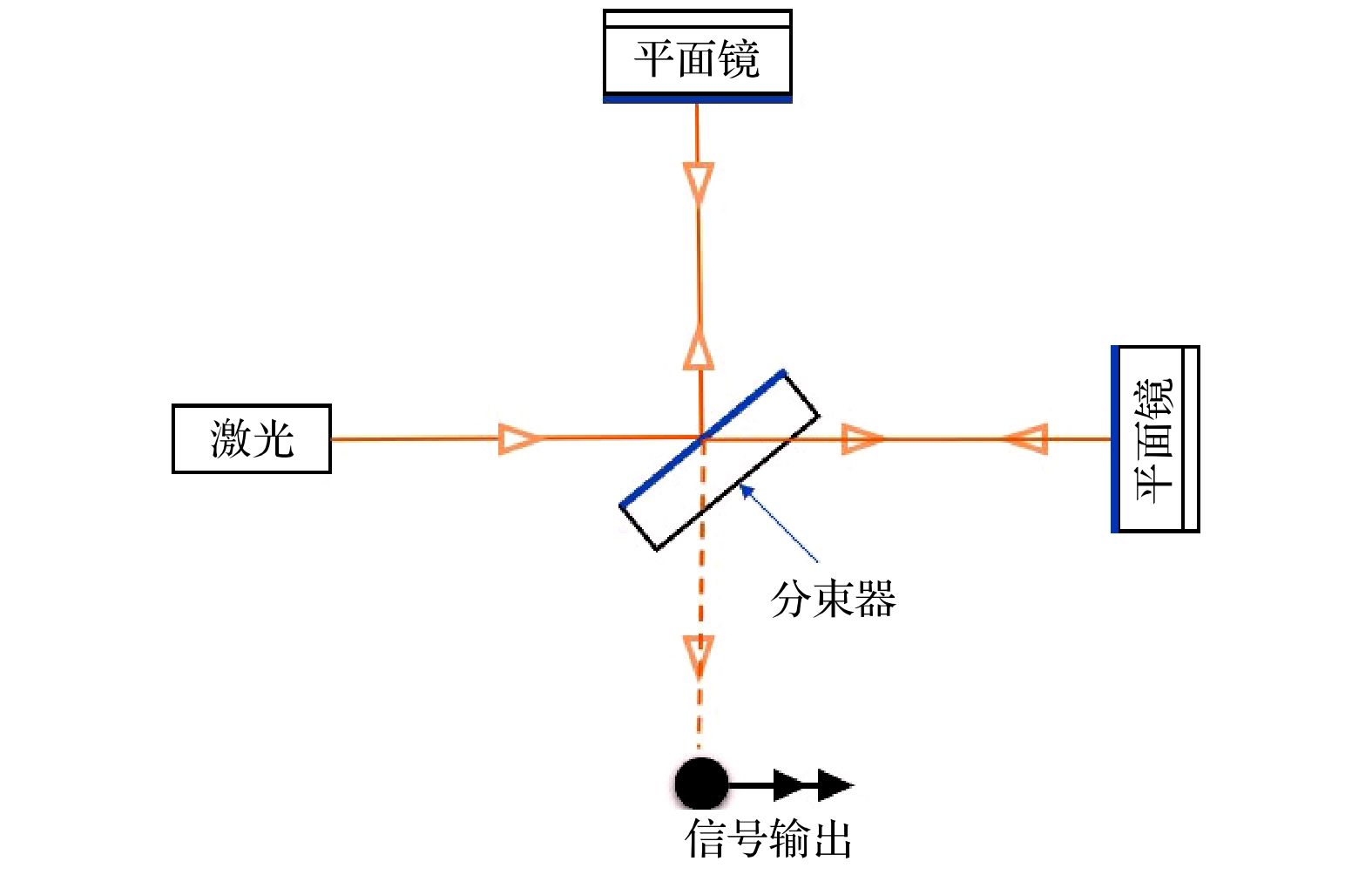
 下载:
下载:
